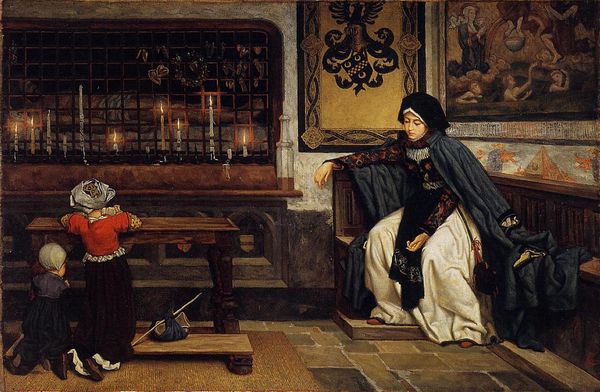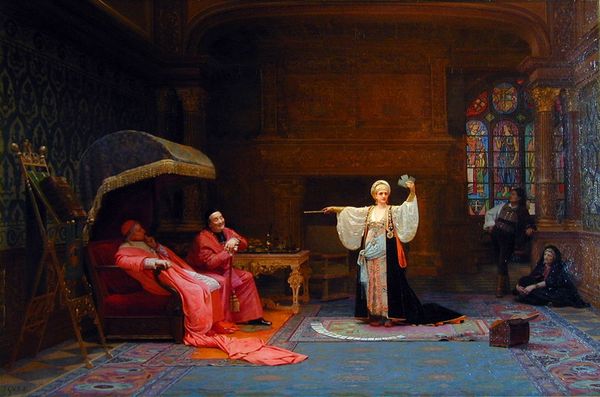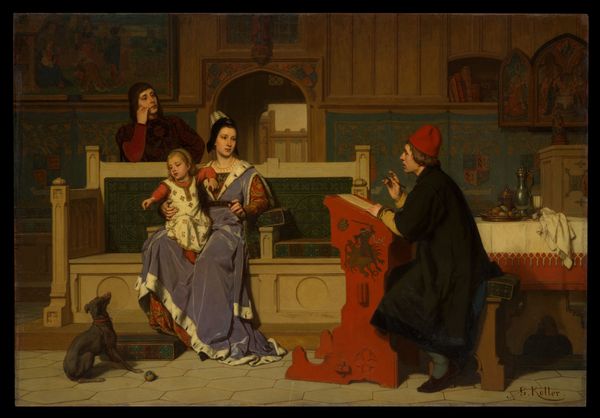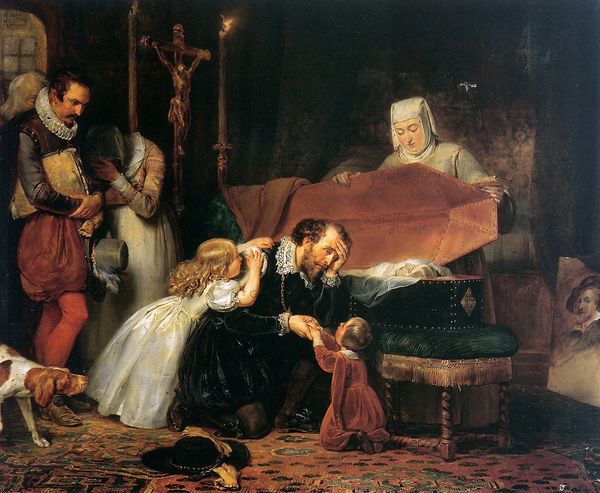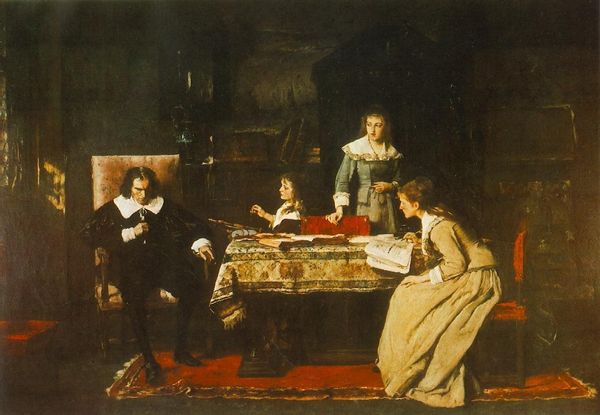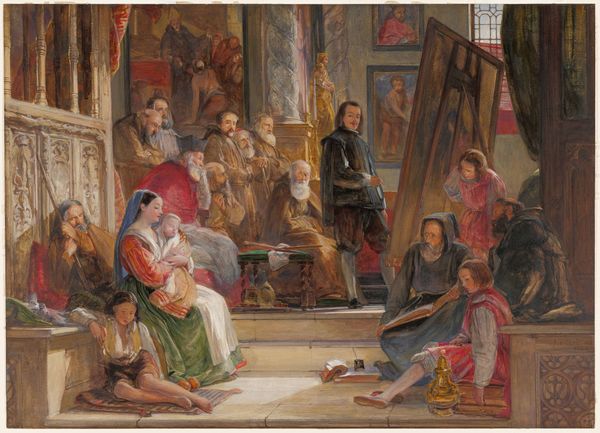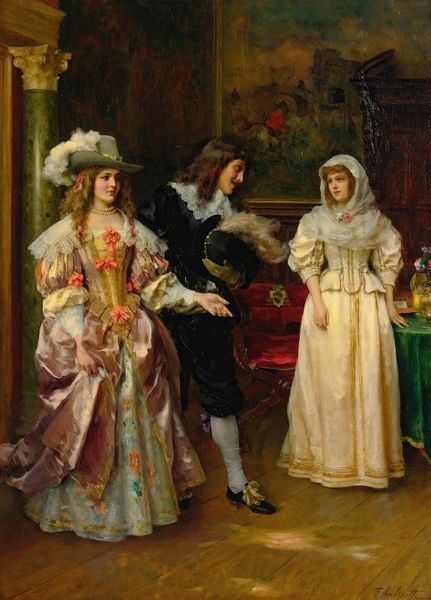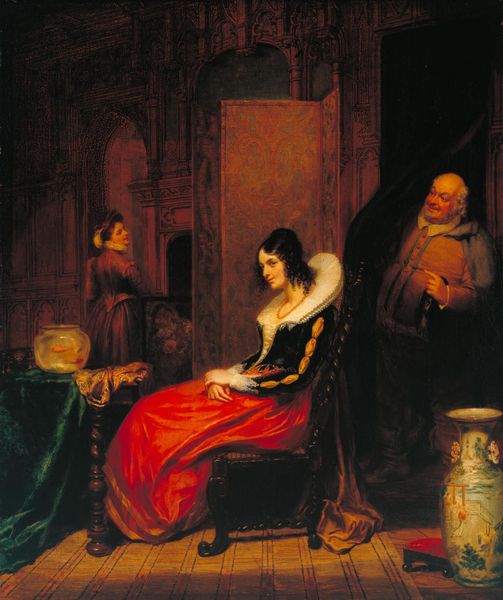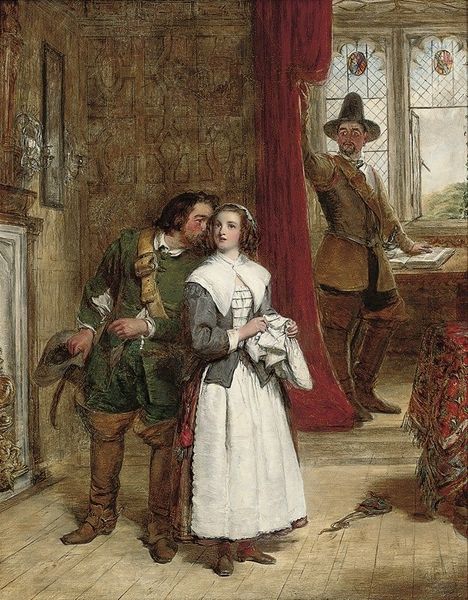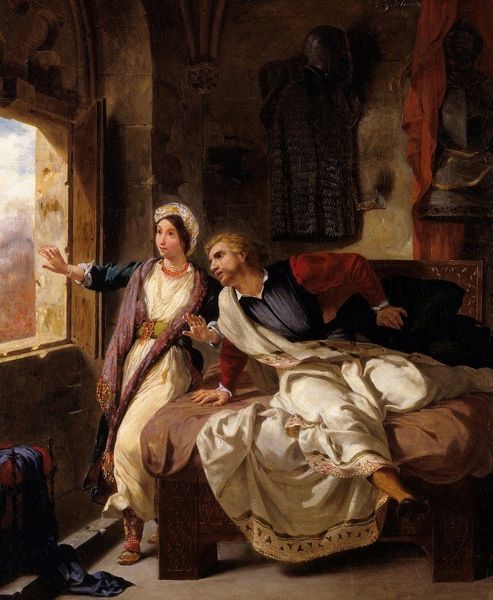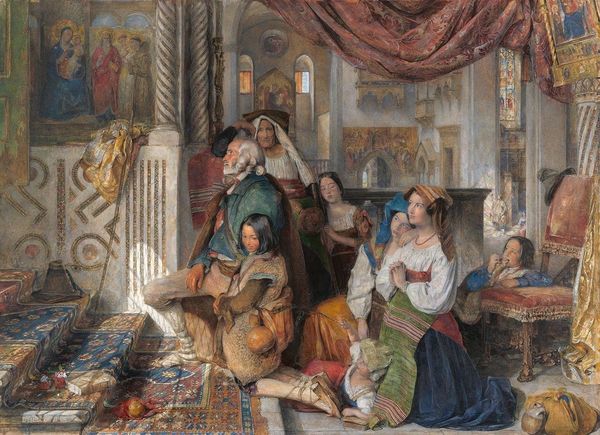
painting, oil-paint
#
portrait
#
narrative-art
#
painting
#
oil-paint
#
figuration
#
genre-painting
#
history-painting
#
italian-renaissance
Copyright: Public domain
Curator: Oh, isn't this intriguing? This painting is Gerolamo Induno's "A Game of Chess (scene from a play by Giuseppe Giacosa)," created in 1881. It feels like a scene pulled straight from the Italian Renaissance, despite being painted much later. Editor: Yes, my first impression is one of quiet intensity, like a lull before a storm. It's as if everyone is holding their breath. I notice that this is domestic scene featuring both women and men of differing social standing playing a game. It immediately reminds me of Artemisia Gentileschi’s depictions of Judith Slaying Holofernes! Curator: I see what you mean about the drama. There's a real narrative tension in the scene, captured with such precision. Induno really pays attention to the light, doesn't he? The way it illuminates the chess board, highlighting the central figures… it feels almost theatrical. You know, I wonder about that fur rug—so opulent—contrasting with the rather somber mood. It's a detail that I feel drawn to. Editor: Absolutely. The lighting and staging signal that there are power dynamics at play here. While we see what appears to be a tense scene on a superficial level, this might represent patriarchal structures, which dictate women's existence, similar to Virginia Woolf’s “Shakespeare's Sister.” The figures surrounding the chessboard have power, whereas the blonde woman seems subdued, playing her part. She also might be considered the pawn. I wonder about the original play, and what we can find in its original text. Curator: True, and the Renaissance Revival interior certainly reinforces that sense of established order. It is a reminder of class and wealth. And that figure in the background reading a book… He adds another layer of intellectual weight, doesn't he? Like a silent judge or commentator on the game. Editor: He represents the social currency available to white, old men. Perhaps there is something to be said about the other old, white man reclining by the fireplace, too. This feels to me like more than just an innocent pastime; it represents the strategies and social politics inherent in the upper class. Curator: So well put! It does make you wonder, what are the stakes here? Is it merely a game of chess, or something much more? Editor: Exactly. I’m drawn to that ambiguity. The work offers viewers an image of everyday life that encourages more investigation! Curator: It definitely pulls us into the intricacies of the era, and the subtle gestures that shape our interpretation of history. Editor: Right, prompting questions, sparking discussion—which is, I think, exactly what a painting like this should do.
Comments
No comments
Be the first to comment and join the conversation on the ultimate creative platform.
